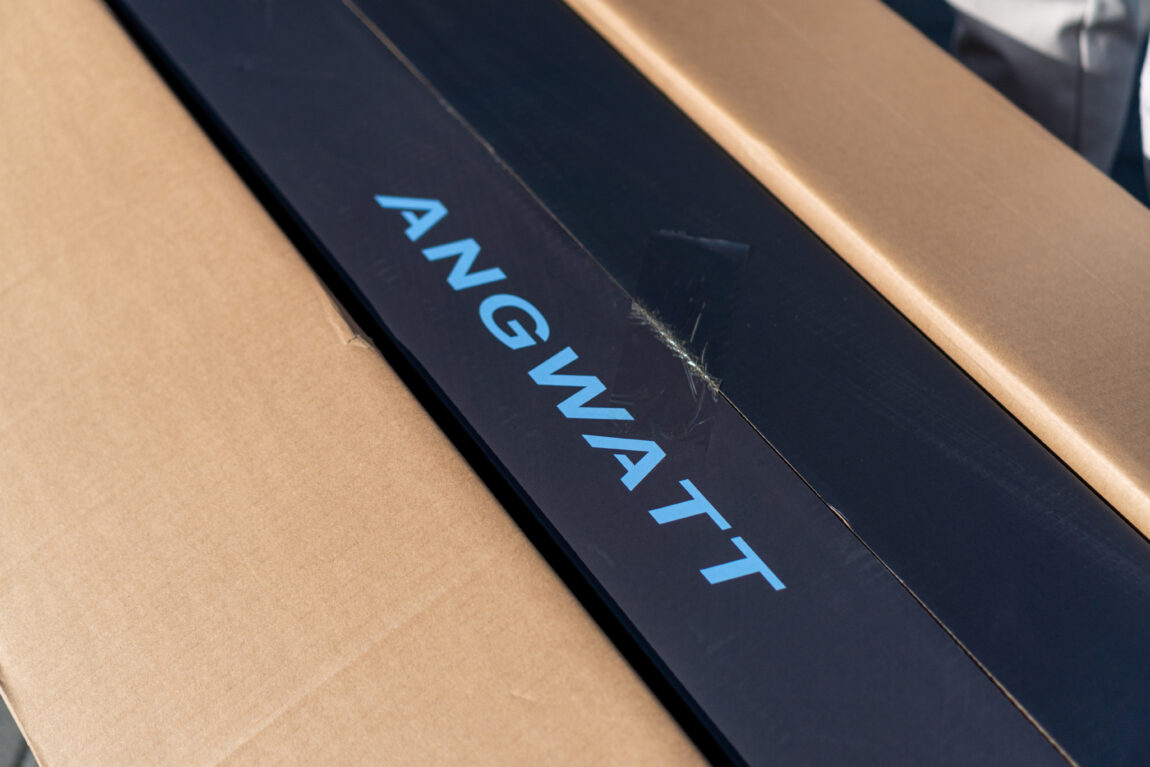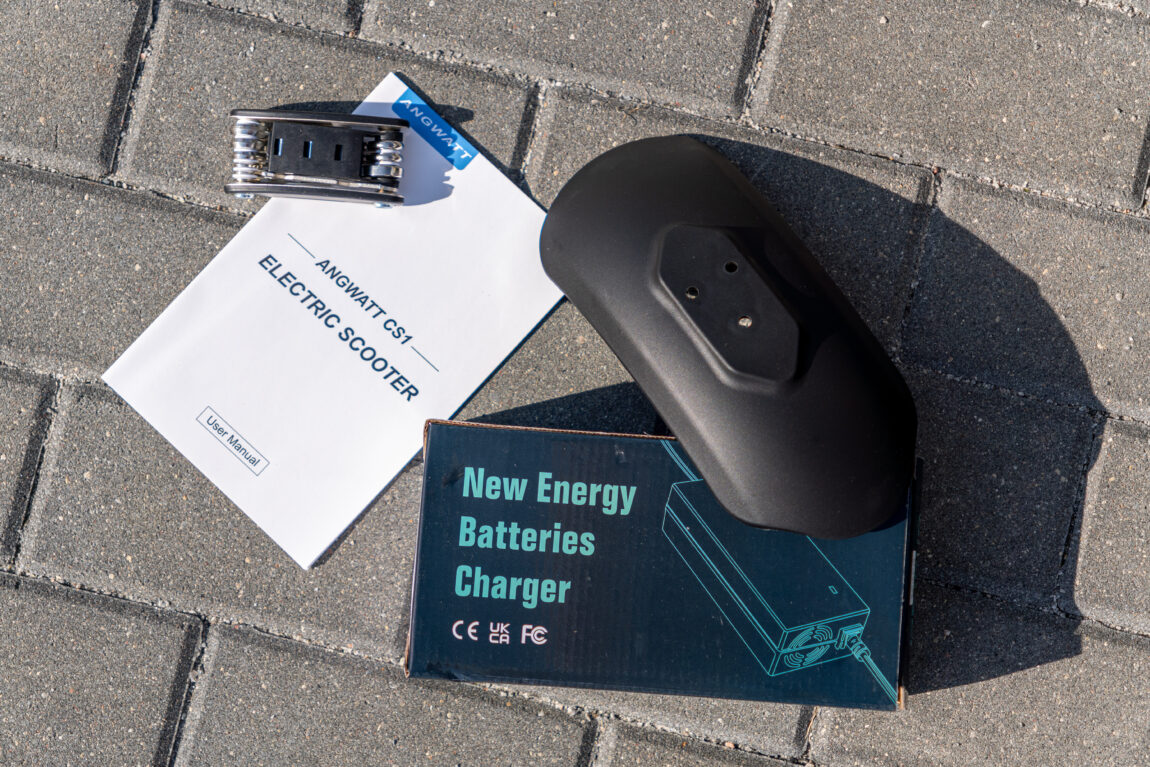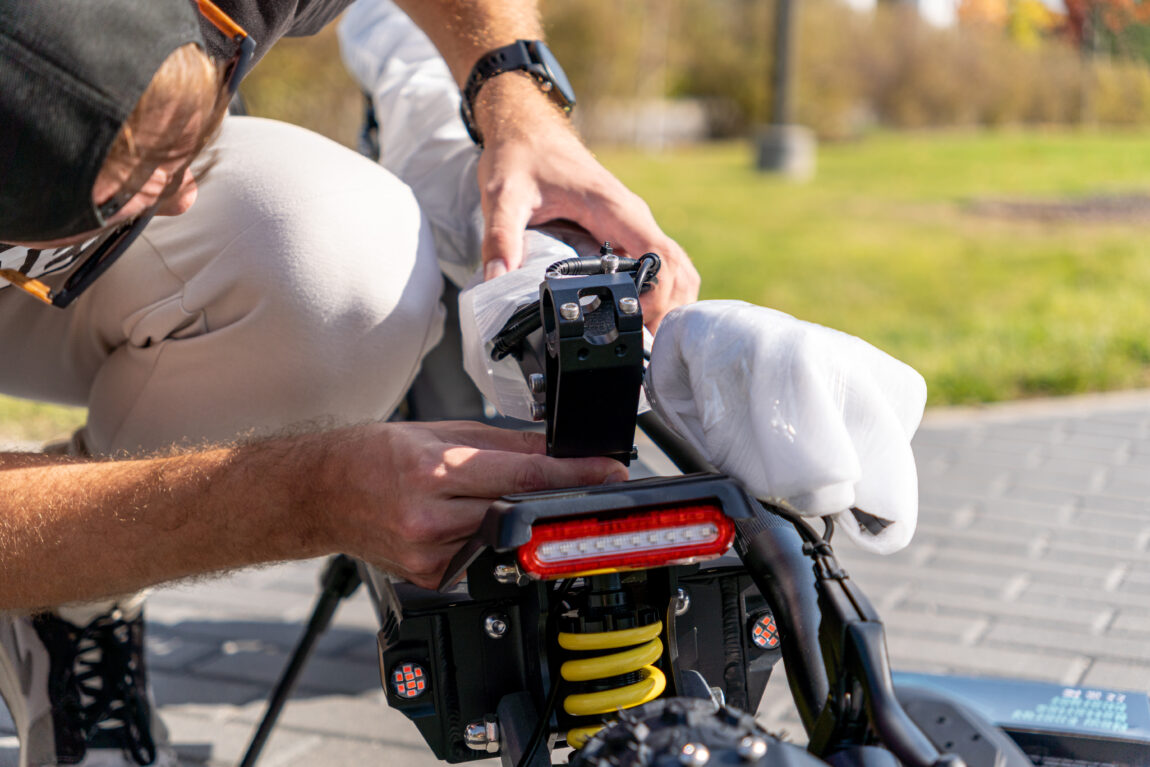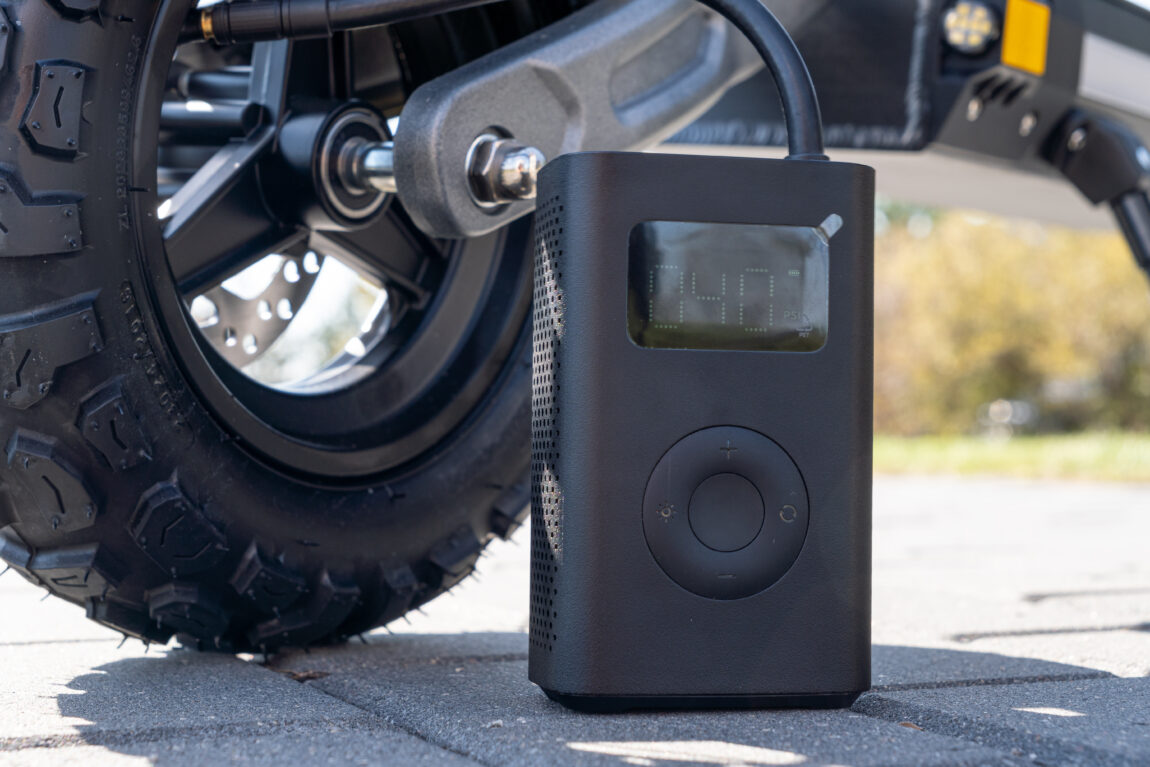Today's market of electric scooter manufacturers is full of names. Some of them are known to everyone who is at least slightly interested in scooters - these are giants such as Teverun, Xiaomi, Ninebot, etc. ANGWATT, probably a manufacturer that most people have never heard of. It's no secret that we like to try lesser-known or visible products, and among them we find real gems - products with competitive prices, exclusive features, and sometimes even better parameters than well-known manufacturers.
ANGWATT CS1
Assessment:
What did we like?
What didn't we like?
ANGWATT CS1 - a scooter with an exclusive design, size and excellent technical characteristics for its price. In today's review, I will try to solve the riddle, after all, for what type of people and for what driving it is intended.

Unboxing
A box in a box - this is how we received the scooter. At first glance, the indistinguishable box was hiding a more beautiful one inside, and inside it was the ANGWATT CS1. The scooter is packed fairly standard, with the steering wheel (and screen) and rear mudguard removed.

Scooter accessories - user manual, tool kit and 2.5A charger. The latter is really quite large, but practically weighs nothing. Assembling the scooter is simple and would take up to 20 minutes even for first timers.

First impressions
ANGWATT CS1 is a big scooter in terms of its length, height and weight (30kg). Even compared to scooters like the Kaabo Mantis King GT or the Teverun Fighter Mini, this one is bigger. 11-inch tires, a high parking platform, bright and large spring shock absorbers and a strong metal body - this is the image of a real off-road monster.

Let's start with the steering wheel about build quality. On its left side you will find the light/turn/signal/power button block. This is a slightly different block, where the turns are connected not by pressing, but by directing the lever to the appropriate side. The position and the principle of activation are much more convenient than with the turn buttons.

In the middle, an impressively large screen, with somewhat less impressive assembly quality. It's a cheap plastic and glass (more like plastic) kit. On the right side of the steering wheel, there is only a thumb-operated speed control stick. The steering wheel handles are cheap, but they don't slip out of your hands, and it's comfortable to hold the steering wheel. The wires are routed through the inside of the steering column, so the overall picture is neat.
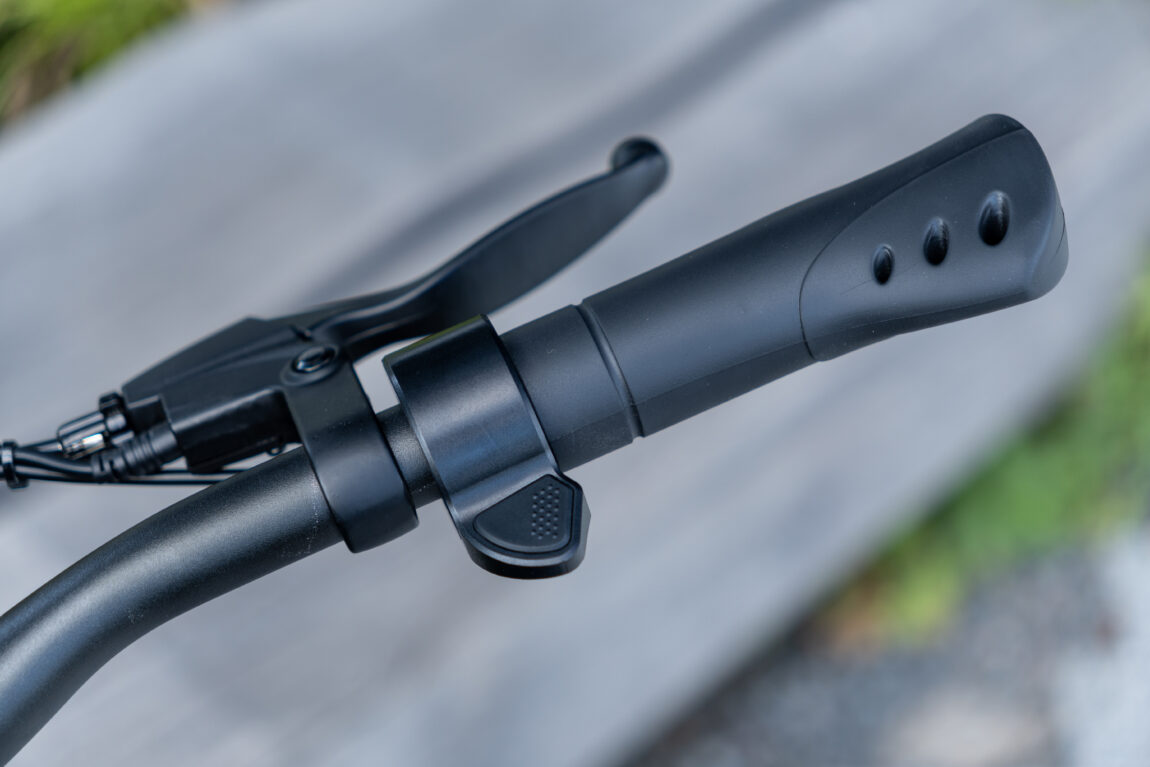


Traveling from the steering wheel down, an aluminum plate is bolted to the steering stem. Its purpose could not be ascertained and it is probably only a design element. It's an odd choice, albeit a small one, but it's extra weight.

The steering column folding mechanism is fixed with a clamp and a small hook (backup locking). Although it doesn't look like the safest mechanism, after testing (covered about 100km) nothing wobbled, creaked or raised doubts about safety.

A rather unusual solution is the connection of the steering column with the parking platform. The metal frames rising from the latter two sides are fixed with screws, 4 on each side. It's another odd choice, because looking at the scooter, it looks like someone who doesn't mind any potholes. Of course, when driving through potholes, bolts can come loose, and then disaster can happen. So, in addition to checking the tire pressure, this is another place that is recommended to be checked before the trip.

The standing platform, which is covered with rubber, is narrow. You won't be able to put your feet next to each other (side by side) in it, but there are no problems if you stand sideways. Metal frames holding the steering wheel to the parking space with folded corners.

Yes, this is another oddity of this scooter - although it didn't happen, there is a chance that the shoe will catch (tear) while driving, and you won't be able to get off if you need to, which is dangerous enough. There are LED strips on the sides of the parking platform, and a charging socket on one of the sides. The latter is covered with rubber protection, but it will definitely not be possible to match it the first time.

The ANGWATT CS1 off-road wheels measure an impressive 11 inches. Spring shock absorbers, adjustable by turning the top nut (requires additional tools). Unfortunately, even in their softest position, they do not provide comfort on a smooth road. Nevertheless, the stiffness of the shock absorbers off-road helps to keep the scooter stable.

One of the best features of this scooter is the approximately 19cm (unladen) ground clearance to the parking platform. This is the highest scooter I have tested, with which there were no problems "climbing" on the curbs.
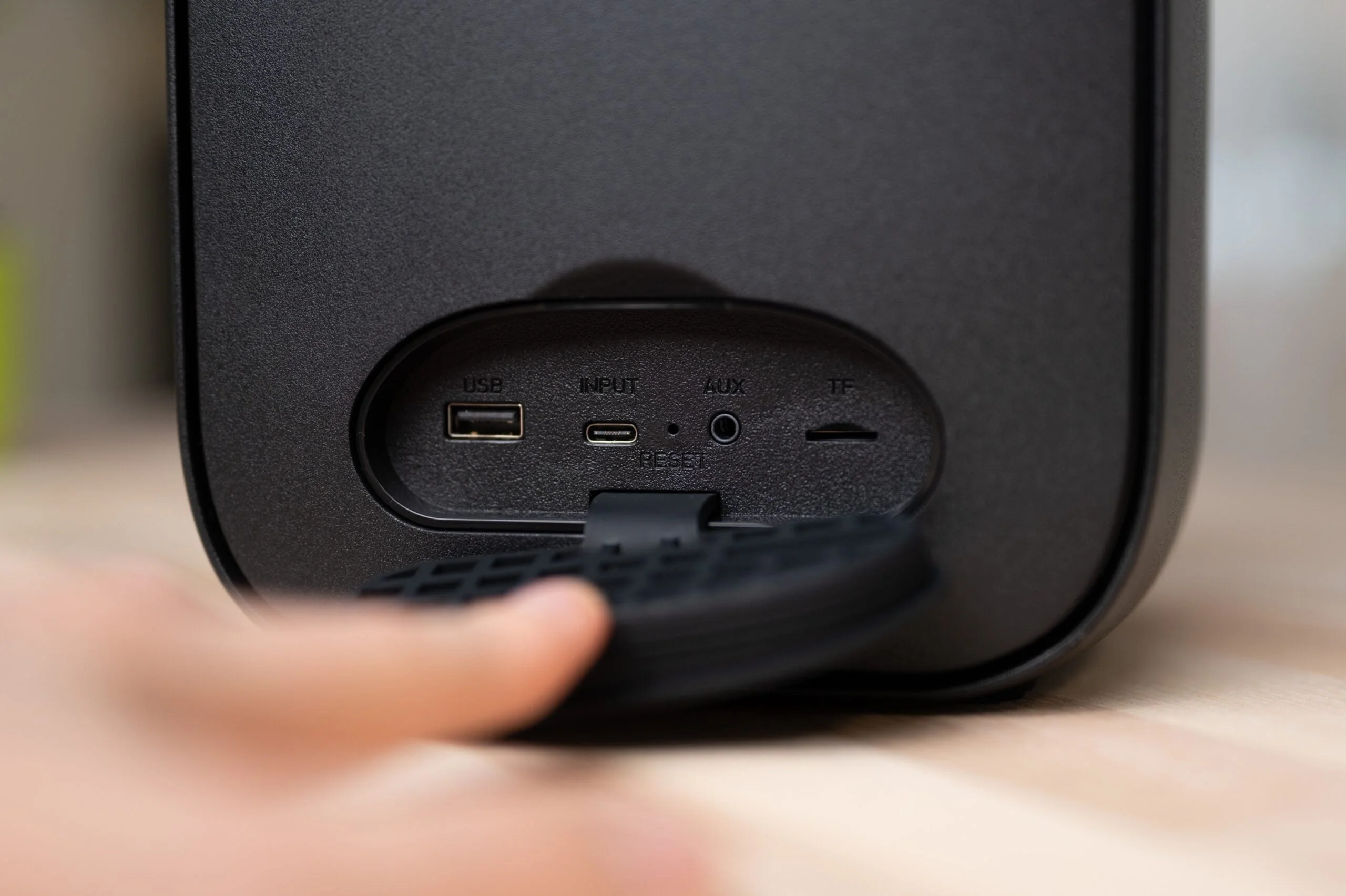
Daily drive/convenience
So, it's time to test this off-road monster, and for such a scooter, the easiest task should of course be the smooth road. But this is only theory, which of course differs from practice. Only when you start driving, you feel that something is wrong, something is missing...

Without turning your head, this is most likely a limited power by the manufacturer. After changing a few settings, nothing changes in the scooter - the ANGWATT CS1 accelerates indescribably slowly. So slow that the familiar green Bolt scooter would probably win a race up to 20 km/h.

The maximum speed of this scooter is not limited, and after lifting the rear wheel, we can see a speed of over 80 km/h on the screen. Unfortunately, this is not a defective scooter, but the manufacturer's choice (we later confirmed this with the supplier). The CS1 engine is thrust limited to have more power to reach higher speeds. This is unusual and at the same time strange, because judging by the appearance, this scooter is intended for off-road, where traction should be more important than top speed.

Despite the choice of these engine features, this scooter is definitely not bad to ride. After more than 100 kilometers, after getting used to the features of traction and knowing all the weak features, I managed to make friends with CS1.

The big tires make it easier to drive over potholes, which I avoid with my personal Teverun Blade Mini. The high ground clearance while driving in the forest allowed me to stay on the scooter more than once when driving through roots or more sandy areas. According to the manufacturer, it is possible to overcome (it is more recommended to drive through) water sources no deeper than 2 cm, but in practice we drove much deeper, and this scooter did not have any difficulties.

The above points only confirm that the CS1 is focused on off-road driving, and it copes well with such driving. However, on a smooth road or driving in city conditions, it's a different story. The same tires that provide better traction on unpaved surfaces make a lot of noise on the bike path.

When riding, the sound is reminiscent of the hum of FatBike bicycle tires. Unstable contact with the surface (due to grooves) also causes inconvenience when driving at maximum speed, where some instability is felt. Also, after reaching the maximum speed of this scooter, it is quite difficult to find the central position of the steering wheel, so you have to constantly adjust it.

The shock absorbers are quite tough for off-road driving, but they manage to "absorb" larger potholes, and the tires overcome smaller ones. Although the parking platform is narrow, there is enough legroom. After the covered distance test, fatigue appeared only in the hands, which was caused by frequent vibration (a combination of road surface, tire type and shock absorber stiffness).
This scooter also has a cruise control feature, but here again it's a little weird. It turns on only after a few seconds of maximum pressure on the speed lever, that is, only when running or when the maximum speed has already been reached. Since it is not small, I often missed using my favorite function when driving in the city.

Lighting is another strange feature of this scooter. The front light is bright, but the center of its light beam is dimmed (resembles the letter H). When the headlight is raised, the middle is illuminated well, but at the same time, the lighting area on the sides also rises, which becomes a glare for passers-by or other road users. It would be great if this lamp worked the other way around - the lighting area is higher in the middle and lower at the edges. However, it is safest to see where you are going.

The side LED strips are in one color and are perfectly visible in the dark or at night. The tail light is also visible, and it integrates the only turn bar on the scooter. The latter is visible in daylight only with careful observation, and after dark it merges with the illumination of the taillight and is invisible. In addition to the display on the screen, an audio signal also informs about the activated turn.

Screen and settings
The scooter is unlocked with an NFC card that needs to be held up to the middle of the screen. When turning on, first you need to click the power button, and when turning off, just touch the card. Simple, fast and effective. The screen itself is large, and its lighting is weak. It is difficult, but not impossible, to see the displayed information in bright sunlight.

The information presented is limited to the minimum (run, speed, distance, battery level in divisions and voltage). The advanced P settings are also no different - without the essential options, you can turn on driving from a place and the constant speed function.

Maximum speed and acceleration
As I mentioned, the ANGWATT CS1 is slow to accelerate, but on a flat road top speed is achieved consistently and confidently. On relatively flat roads, with a weight of 77-80 kg, it is easy to reach a speed of 50 km/h, and the maximum speed achieved was 51 km/h. This is only 4 km/h slower than the maximum speed declared by the manufacturer.

Driving uphill
Going uphill is the weak point of this scooter. If you stop at the foot of the mountain, you can only dream about driving. Indeed, it is impossible to climb a 3-meter-high, 2-3-step steep mountain from the place, which is simply unfortunate. The most basic city scooters (Xiaomi M365, Ninebot G30, etc.) would not even call such a hill a task.

The only way to get up a hill with the ANGWATT CS1 is to accelerate, so how did it manage to overcome the beloved Narbutos st. and Želvo st. mountains? Since the Narbut mountain is not so steep, but complicated in its length, CS1 drove up to it at a speed of 30-35 km/h. Želvo st. the mountain turned out to be too difficult. Even after accelerating from well beyond the start of the street, halfway through the steeper part of this hill became the breaking point for this scooter.
Battery and distance covered
According to the manufacturer, the 48V 21.3 Ah battery will cover a distance of 65-85 km. Sound a little too good? I also tested the distance to be covered. With a weight of 79 kg, tires inflated to the maximum, we managed to cover 43 km in 13 degree heat outside. Yes, it's far from the declared distance, but for the price of this scooter, it's a great distance to cover.




This test took almost 2 hours, with an average speed of 24.6 km/h and a maximum speed of 54.2 km/h. A fully charged scooter took approximately 9 hours to fully charge. Those who like silence should at least charge this scooter in the next room. The cooling of the charger is loud enough.

Verdict
During the distance test, a scooterist approached me with a much more serious Teverun 7260R scooter. Why? Because like me and many others, at first glance the ANGWATT CS1 appeared to be a powerful and serious scooter.

It's a pity, but not everything is always as it seems, and the English expression "all show and no go" is perfect for this scooter. In part, this perfectly describes CS1. But is it really that bad? Of course not. When evaluating the whole, you need to keep in mind the price, and knowing it, you can forgive a lot for this "off-road monster".
Discounts
2025-02-18
Xiaomi electric air pump 2: for scooters, bikes, balls now for €34
Reviews
2024-06-19





